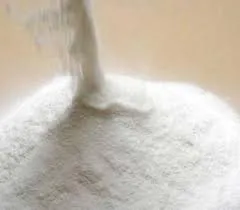
stu . 11, 2024 09:32 Back to list
construction hpmc
The Role of HPMC in Construction A Comprehensive Overview
Hydroxypropyl Methylcellulose (HPMC) is a versatile cellulose ether widely utilized in various industries due to its unique properties. In the construction sector, HPMC has emerged as an essential additive, playing a crucial role in the formulation of building materials such as mortars, tiles, and plaster. This article provides a detailed examination of HPMC, its functions, and its advantages in construction applications.
Understanding HPMC
HPMC is a semi-synthetic polymer derived from cellulose, which is a natural polymer found in plant cell walls. Through chemical modification, HPMC obtains unique properties, including solubility in water, film-forming ability, and thickening characteristics. This makes it suitable for a wide range of applications, particularly in the construction industry.
Functions of HPMC in Construction Materials
1. Water Retention One of the primary functions of HPMC in construction is to enhance water retention in mortars and renders. By absorbing water, HPMC helps maintain the workability of the material, allowing for a longer duration of application. This is particularly beneficial in dry weather conditions, ensuring that the material remains workable until it sets.
2. Improved Workability HPMC improves the consistency and workability of construction materials, allowing for easier mixing, application, and smoothing. This quality is crucial in ensuring that materials can be applied uniformly, promoting better adhesion and overall performance.
3. Enhanced Adhesion The incorporation of HPMC in tile adhesives and cementitious materials enhances their bonding strength. This results in improved adhesion properties, which are essential for ensuring that tiles and other materials remain securely in place, reducing the risk of detachment or failure over time.
4. Thickening Agent HPMC acts as a thickening agent, increasing the viscosity of construction materials. This property is essential in preventing sagging or slumping of materials during application, particularly on vertical surfaces. By controlling consistency, HPMC helps achieve the desired texture and stability.
construction hpmc

5. Film Formation Upon drying, HPMC forms a continuous film, which contributes to the durability and robustness of construction materials. This film acts as a barrier, protecting the underlying layer from moisture and other environmental factors, thus extending the lifespan of the construction.
Advantages of Using HPMC in Construction
1. Versatility HPMC can be used in various building materials, including adhesives, mortars, grouts, and paints. Its adaptability makes it a preferred choice for many construction applications.
2. Eco-Friendly As a cellulose derivative, HPMC is derived from renewable sources, making it an environmentally friendly choice. Additionally, its use can reduce the need for other synthetic additives, contributing to greener construction practices.
3. Non-Toxic HPMC is non-toxic and safe for use in both residential and commercial construction projects. This safety profile is especially important in applications where human interaction is significant, such as indoor environments.
4. Cost-Effectiveness While the initial cost of HPMC might be slightly higher than traditional additives, its benefits, such as enhanced performance and durability, often lead to cost savings in the long run. Improved workability can also lead to reduced labor costs during application.
Conclusion
HPMC has proven to be an invaluable additive in the construction industry, providing a myriad of benefits that enhance the performance and durability of building materials. As construction practices continue to evolve, the demand for high-performance additives like HPMC is expected to grow. Embracing the use of HPMC not only leads to improved quality in construction projects but also aligns with sustainable practices that prioritize environmental responsibility. By understanding and utilizing the advantages of HPMC, stakeholders in the construction sector can ensure more reliable and resilient structures for the future.
-
Unlocking the Benefits of HPMC Products: A Gateway to Versatile Applications
NewsAug.07,2025
-
Unleashing the Potential of HPMC Ashland: A Comprehensive Look
NewsAug.07,2025
-
Tile Bonding Cellulose: The Key to Superior Adhesion and Durability
NewsAug.07,2025
-
Hydroxypropyl Methylcellulose Powder: The Versatile Component in Modern Pharmaceuticals
NewsAug.07,2025
-
Hydroxyethyl Cellulose: The Versatile Solution for Various Industries
NewsAug.07,2025
-
Hydroxyethyl Cellulose (HEC): The Versatile Polymer for Various Applications
NewsAug.07,2025







